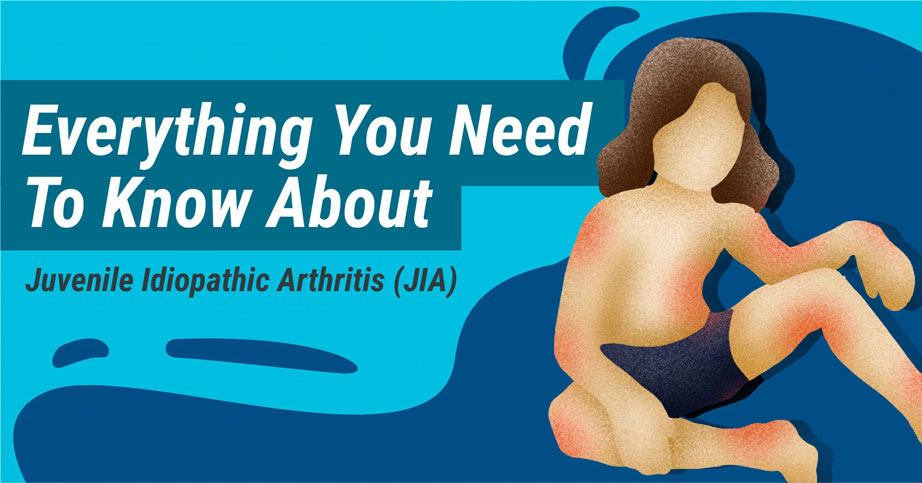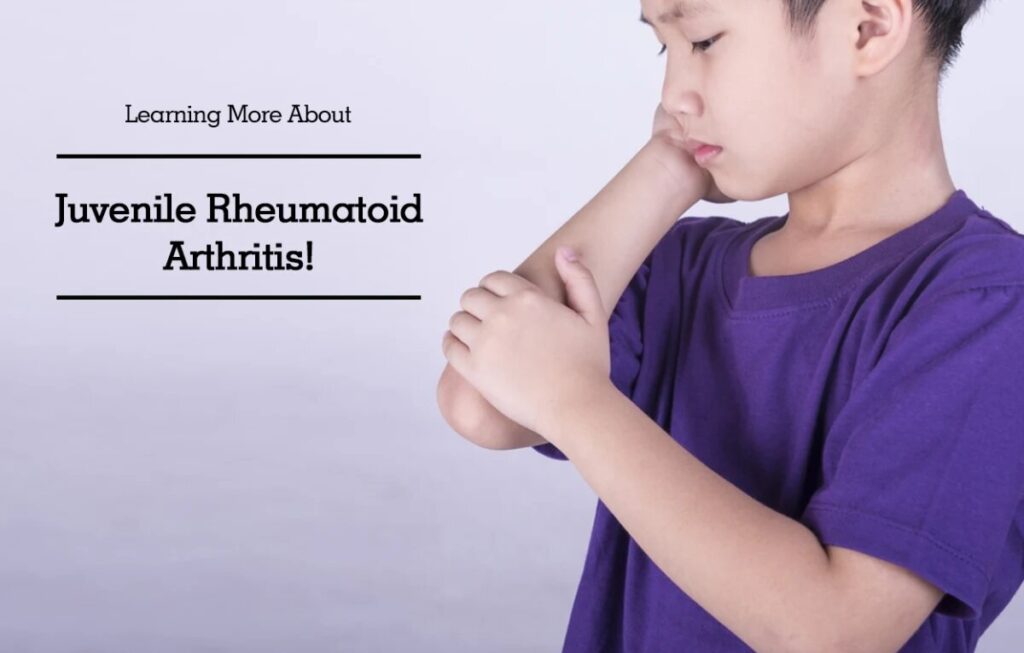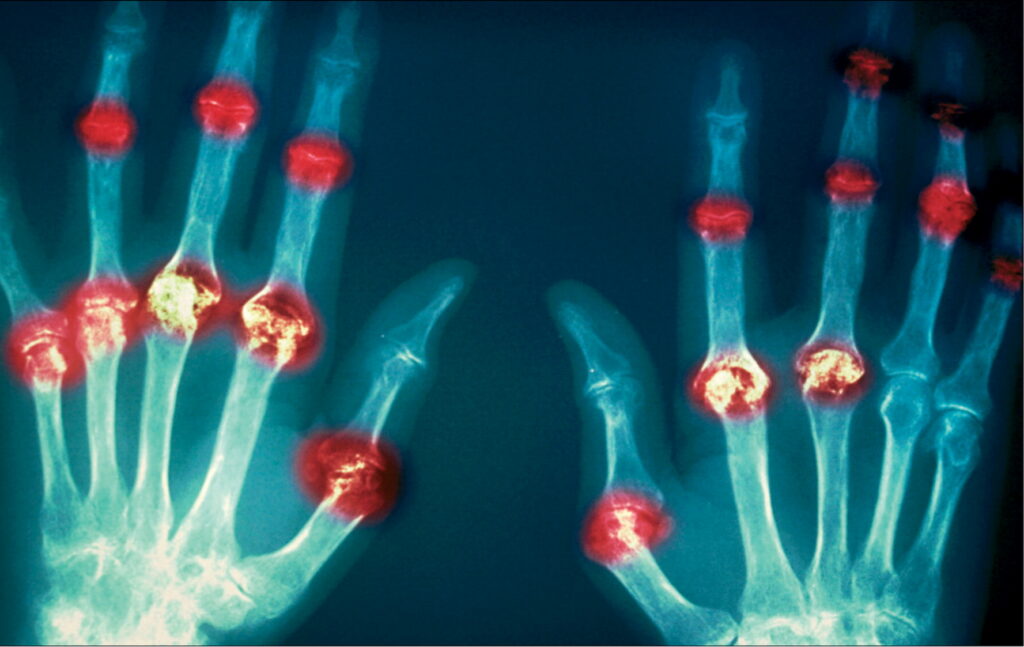WHAT IS JUVENILE IDIOPATHIC ARTHRITIS?
Juvenile idiopathic arthritis, previously known as juvenile rheumatoid arthritis, is the most common type of arthritis in children under the age of 16.
Juvenile idiopathic arthritis could cause persistent joint pain, swelling, and stiffness. Some children might experience symptoms for only a few months, while others have symptoms for many years.
Some types of juvenile idiopathic arthritis can cause severe complications, such as growth problems, joint damage, and eye inflammation. Treatment concentrates on controlling pain and inflammation, improving function, and preventing damage.
SYMPTOMS
The most common signs and symptoms of juvenile idiopathic arthritis include:
- Pain – While your child might not complain of joint pain, you may notice that he or she limps — particularly first thing in the morning or after a nap.
- Swelling – Joint swelling is common but is usually first noticed in larger joints such as the knee.
- Stiffness – You might notice that your child appears clumsier than usual, especially in the morning or after naps.
- Fever, swollen lymph nodes, and rash – In some cases, high fever, swollen lymph nodes, or a rash on the trunk might occur — which is usually worse in the evenings.
Juvenile idiopathic arthritis could affect one joint or many. There are several different subtypes of juvenile idiopathic arthritis, but the primary ones are systemic, oligoarticular, and polyarticular. Which type your child has depends upon symptoms, the number of joints affected, and if fever and rashes are prominent features.
Like other forms of arthritis, juvenile idiopathic arthritis is characterized by times when symptoms flare up and times when symptoms might be minimal.
WHEN SHOULD YOU SEE A DOCTOR?
Take your child to the doctor if he or she has joint pain, swelling, or stiffness for more than a week — particularly if he or she also has a fever.
CAUSES
Juvenile idiopathic arthritis happens when the body’s immune system attacks its own cells and tissues. It is not known why this occurs, but both heredity and environment seem to play a role.
RISK FACTORS
Some forms of juvenile idiopathic arthritis are more frequent in girls.
COMPLICATIONS
Several severe complications can result from juvenile idiopathic arthritis. But keeping a careful watch on your child’s condition and seeking appropriate medical attention could greatly reduce the risk of these complications:
- Eye problems – Some forms could cause eye inflammation. If this condition is left untreated, it might result in cataracts, glaucoma, and even blindness.
Eye inflammation frequently occurs without symptoms, so it is important for children with this condition to be examined regularly by an ophthalmologist. - Growth problems – Juvenile idiopathic arthritis could interfere with your child’s growth and bone development. Some medications used for treatment, mainly corticosteroids, also could inhibit growth.
DIAGNOSIS
Diagnosis of juvenile idiopathic arthritis could be difficult because joint pain can be caused by many different types of problems. No single test could confirm a diagnosis, but tests can help rule out some other conditions that produce similar signs and symptoms.
Blood tests
Some of the most common blood tests for suspected cases are:
- Erythrocyte sedimentation rate (ESR) – The sedimentation rate is the speed at which your red blood cells settle at the base of a tube of blood. An elevated rate could indicate inflammation. Measuring the ESR is mainly used to determine the degree of inflammation.
- C-reactive protein – This blood test also measures the levels of general inflammation in the body but at a different scale than the ESR.
- Antinuclear antibody – Antinuclear antibodies are proteins commonly produced by the immune systems of people with specific autoimmune diseases, including arthritis. They act as a marker for an increased chance of eye inflammation.
- Rheumatoid factor – This antibody is occasionally found in the blood of children who have juvenile idiopathic arthritis and might mean there is a higher risk of damage from arthritis.
- Cyclic citrullinated peptide (CCP) – Like the rheumatoid factor, the CCP is another antibody that might be found in the blood of children with juvenile idiopathic arthritis and may indicate a higher risk of damage
In many children with juvenile idiopathic arthritis, no significant abnormality will not be found in these blood tests.
Imaging scans
X-rays or magnetic resonance imaging might be taken to exclude other conditions, such as fractures, tumors, infections, or congenital defects.
Imaging might also be used from time to time after the diagnosis to monitor bone development and detect joint damage.
TREATMENT
Treatment for juvenile idiopathic arthritis concentrates on helping your child maintain a normal level of physical and social activity. To accomplish this, doctors might use a combination of strategies to relieve pain and swelling, maintain full movement and strength, and prevent complications.
Medications
The medications used to help children with juvenile idiopathic arthritis are chosen to reduce pain, improve function, and minimize potential joint damage.
Typical medications include:
- Nonsteroidal anti-inflammatory drugs (NSAIDs) – These medications, like ibuprofen (Advil, Motrin, others) and naproxen sodium (Aleve), reduce pain and swelling. Side effects include stomach upset and, much less often, kidney and liver issues.
- Disease-modifying antirheumatic drugs (DMARDs) – Doctors use these medications when NSAIDs alone fail to ease symptoms of joint pain and swelling or if there is a high risk of damage in the future.
DMARDs might be taken in combination with NSAIDs and are used to slow the progress of juvenile idiopathic arthritis. The most frequently used DMARD for children is methotrexate (Trexall, Xatmep, and others). Side effects of methotrexate might include nausea, low blood counts, liver problems, and a mild increased risk of infection. - Biologic agents – Also known as biologic response modifiers, this newer class of drugs includes tumor necrosis factor (TNF) blockers, like etanercept (Enbrel, Erelzi, Eticovo), adalimumab (Humira), golimumab (Simponi) and infliximab (Remicade, Inflectra, others). These medications could help reduce systemic inflammation and prevent joint damage. They might be used with DMARDs and other medications.
Other biologic agents work to suppress the immune system in somewhat different ways, including abatacept (Orencia), rituximab (Rituxan, Truxima, Ruxience), anakinra (Kineret), and tocilizumab (Actemra). All biologics could increase the risk of infection. - Corticosteroids – Medications such as prednisone might be used to control symptoms until another medication takes effect. They are also used to treat inflammation when it is not in the joints, like inflammation of the sac around the heart.
These drugs could interfere with normal growth and increase susceptibility to infection, so they generally should be used for the shortest possible duration.
Therapies
Your doctor might recommend that your child work with a physical therapist to help keep joints flexible and maintain range of motion and muscle tone.
A physical therapist or an occupational therapist might make additional recommendations regarding the best exercise and protective equipment for your child.
A physical or occupational therapist might also recommend that your child make use of joint supports or splints to help protect joints and keep them in a good functional position.
Surgery
In very severe cases, surgery might be needed to improve joint function.
If you or anyone you know is suffering from juvenile idiopathic arthritis, our expert providers at Specialty Care Clinics will take care of your health and help you recover.
Call us on 469-545-9983 to book an appointment with our specialists.



